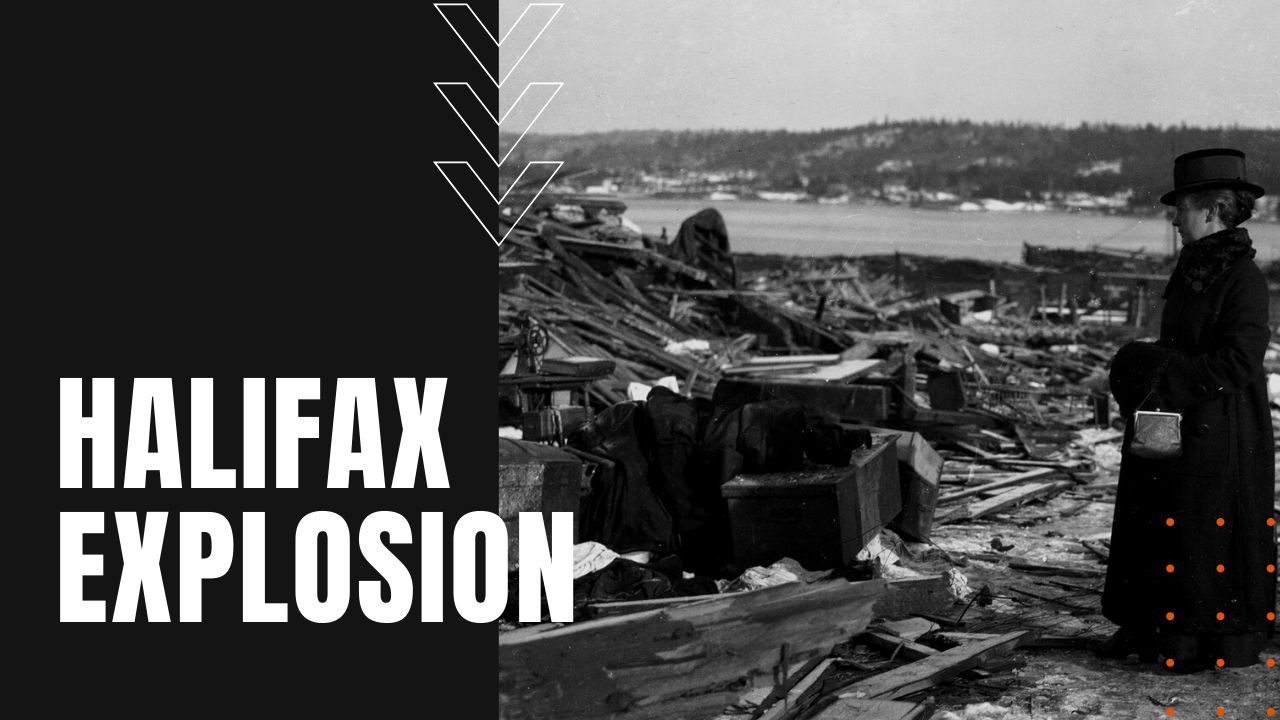Halifax Explosion: The Maritime Bombing Disaster of 1917

In Richmond, as with the rest of Halifax, December 6th, 1917 dawned as just another day in a busy wartime port. Within the confines of Bedford Basin was a massive convoy preparing for the dangerous sail across the North Atlantic, teeming with German U-boats intent on sinking whatever ships they could.
Mont-Blanc Hauls Munitions
Several nights earlier, the French steamer, Mont-Blanc, had slipped quietly out of New York Harbor for passage to Halifax, hauling a dangerous cargo of munitions that were desperately needed by the French military. The Mont-Blanc was sent to Canada by the British, since the ship was too slow for a fast American convoy.
In those days there were fast convoys and slow convoys, and the Mont-Blanc, to put it mildly, sailed about as fast as a jogger, leaving big doubts whether the ship could even keep up with slow convoys headed for Europe. The cargo inside the ship made the Mont-Blanc the equivalent of a floating bomb.
What Caused the Halifax Explosion?
Deep inside the hold of the former passenger steamer were 2300 tons of wet and dry picric acid, 200 tons of TNT, 10 tons of gun cotton and 35 tons of benzol. Entering the overcrowded harbor at Halifax at roughly 8:45 AM, the Mont-Blanc collided at low speed with an unladen cargo ship named Imo.
On the Mont-Blanc, the impact damaged benzol barrels stored on deck, leaking vapors which were subsequently ignited by the collision, setting off a fire on board that quickly grew out of control. Approximately 20 minutes later at 9:04 am, the Mont-Blanc exploded violently, leveling ships in the harbor and structures onshore in a half-mile radius of the now vaporized Mont-Blanc, including the nearby community of Richmond.
A pressure wave snapped trees, bent iron rails, demolished buildings, grounded vessels (including Imo, which was washed ashore by the ensuing tsunami), and scattered fragments of Mont-Blanc for miles in every direction.
Halifax Disaster Relief
Relief efforts began almost immediately, as hospitals quickly filled to capacity. Rescue trains began arriving the day of the explosion from across Nova Scotia and New Brunswick, while other trains from central Canada and the northeastern United States were impeded by blizzards.
Construction of temporary shelters to house the many people left homeless began soon after the disaster, while the affected blast zone area would take years to fully recover. The blast left 1,782 people dead, with another 9,000 injured, making the Halifax Disaster of 1917 one of the deadliest maritime collisions in recorded history.
